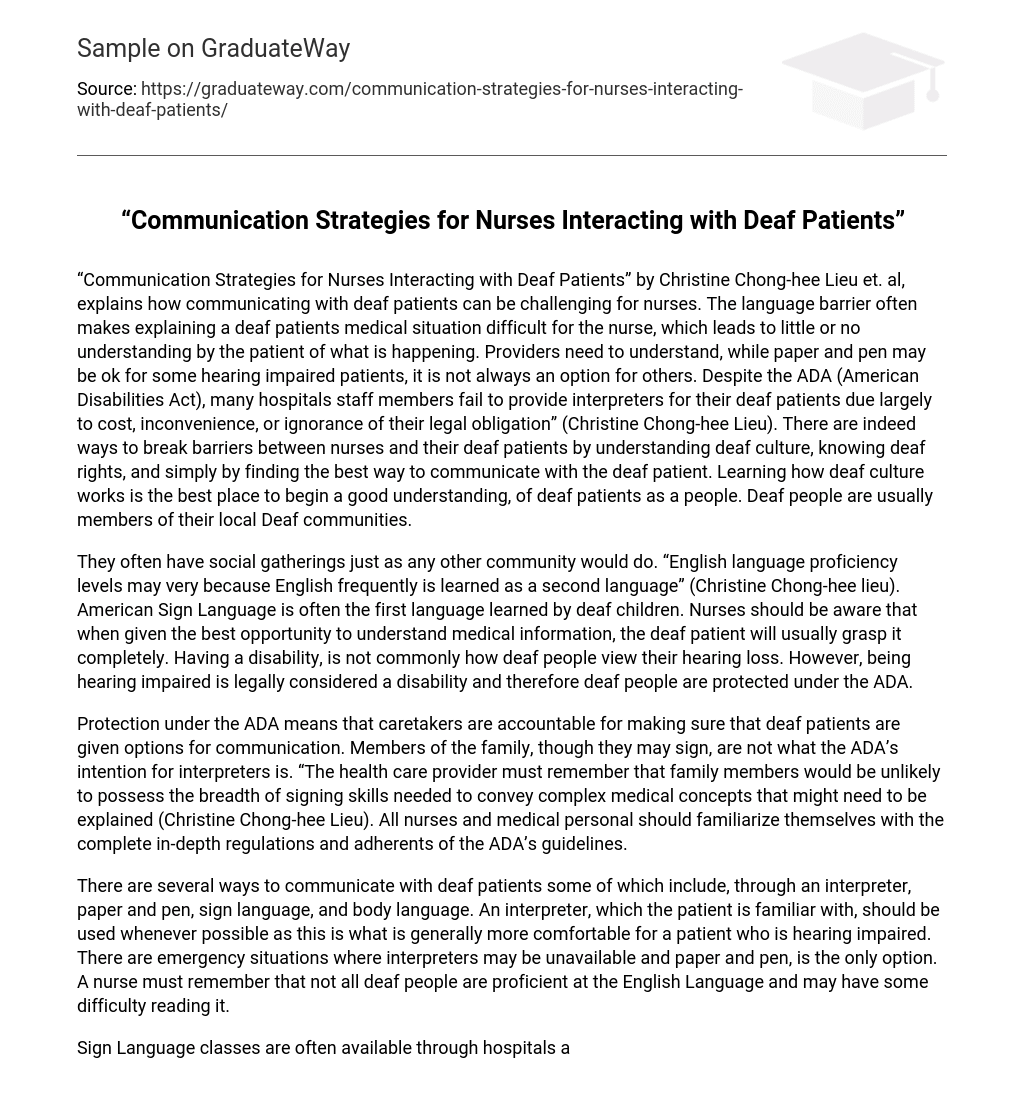The nurse may encounter challenges in communicating medical information to a deaf patient due to the language barrier, leading to limited understanding. It is crucial for healthcare providers to acknowledge that while written communication might be effective for certain hearing-impaired patients, it may not be practical for others. Regrettably, numerous hospitals fail to offer interpreters for their deaf patients, violating the ADA and often attributed to cost, inconvenience, or unawareness of their legal obligation (Christine Chong-hee Lieu).
To establish effective communication and understanding between nurses and their deaf patients, it is important to familiarize oneself with deaf culture, comprehend deaf rights, and determine the most suitable communication method. Acquiring knowledge about the deaf culture is a crucial starting point in truly understanding deaf patients as individuals, who typically belong to local Deaf communities.
They frequently have social gatherings similar to any other community. “English language proficiency levels may vary because English is often learned as a second language” (Christine Chong-hee Lieu). Deaf children often learn American Sign Language as their first language. Nurses should be mindful that deaf patients typically understand medical information fully when provided with the best opportunity. Deaf individuals do not typically perceive their hearing loss as a disability, although being hearing impaired is legally recognized as a disability and affords deaf people protection under the ADA.
Protection under the ADA requires caretakers to ensure that deaf patients have access to communication options. While family members may know sign language, the ADA does not rely on them to act as interpreters. According to Christine Chong-hee Lieu, family members are unlikely to have the necessary signing skills to convey complex medical concepts. It is important for all nurses and medical personnel to familiarize themselves with the detailed regulations and guidelines of the ADA.
There are multiple ways to communicate with deaf patients, including an interpreter, paper and pen, sign language, and body language. Whenever possible, it is recommended to use a familiar interpreter for the patient’s comfort. However, in emergency situations when interpreters are unavailable, using paper and pen is the only choice. Nurses should be aware that not all deaf individuals may be proficient in English and may struggle with reading it.
Sign Language classes are frequently offered by hospitals, and if they are not available, most hospitals will cover the cost for their staff to attend a class nearby. Although Body Language may appear insignificant to someone who can hear, it holds great importance to deaf individuals as it is one of the first things they notice. For example, if a deaf patient is about to receive bad news, they would interpret it through observing the body language of the person before being informed verbally. By having a greater understanding of deaf/hard of hearing people, nurses will find it easier to communicate with their deaf patients.





